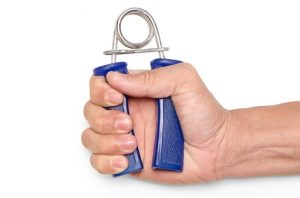 High blood pressure is an extremely common but serious medical concern. It contributes to the strain placed on the cardiovascular system, which can lead to the development of heart disease, stroke, kidney failure, premature mortality, and disability.
High blood pressure is an extremely common but serious medical concern. It contributes to the strain placed on the cardiovascular system, which can lead to the development of heart disease, stroke, kidney failure, premature mortality, and disability.
Each year, 9.4 million people die from complications related to high blood pressure. Risk factors for high blood pressure include population growth, age, unhealthy diet, tobacco use, consumption of alcohol, excess weight, exposure to persistent stress, high cholesterol, diabetes mellitus, and lack of physical activity.
Advertisement
Exercise is one of the first recommended treatments for high blood pressure. A new study has shown a that a simple handgrip strength test can predict hypertension (high blood pressure). This differs greatly from previous literature that describes higher handgrip strength as a signifier for lower blood pressure, although some have suggested that age reverses this.
The researchers used the data of 4,597 patients collected from two cycles of the National Health and Nutrition Examination Survey, which recently included the handgrip strength test as part of its assessment.
During the survey, handgrip strength was tested on each hand three times, with a one-minute recovery break in between rounds on the same hand. The researchers adjusted the handgrip to accommodate the different sizes of participants’ hands.
Obesity and BMI Not Linked to Handgrip Strength Predictor in Women
Handgrip strength was positively correlated with high diastolic blood pressure in both men and women. The results were adjusted for age, BMI, smoking, and drinking status, revealing an increased risk of hypertension associated with increased handgrip strength in the male participants.
After adjusting for these factors, however, there were no significant correlations found in women. For men with increased BMI or obesity, the correlation between handgrip strength and hypertension risk was even greater.
The researchers feel that this study is the first to thoroughly examine the relationship between handgrip strength and hypertension in adults across all ages. Previous studies have only examined this relationship in teenagers or in elderly adults over the age of 85. The exact cause of this relationship remains unclear, though the researchers provide several hypotheses in their study.
Advertisement
The strengths of this study included its population size and representation. As the survey they collected their data from is a national survey across the United States, it’s representative of the country’s population.
The researchers believe further studies are necessary to determine the causal relationship between handgrip strength and increased risk of high blood pressure, or whether one exists at all. The results of this study contribute to the pool of research currently available on this relationship, however, and provide certain insights that could be used in the prevention of hypertension.
Related:
- 21 foods that raise blood pressure level
- What causes high systolic blood pressure? Symptoms, treatment, and home remedies
